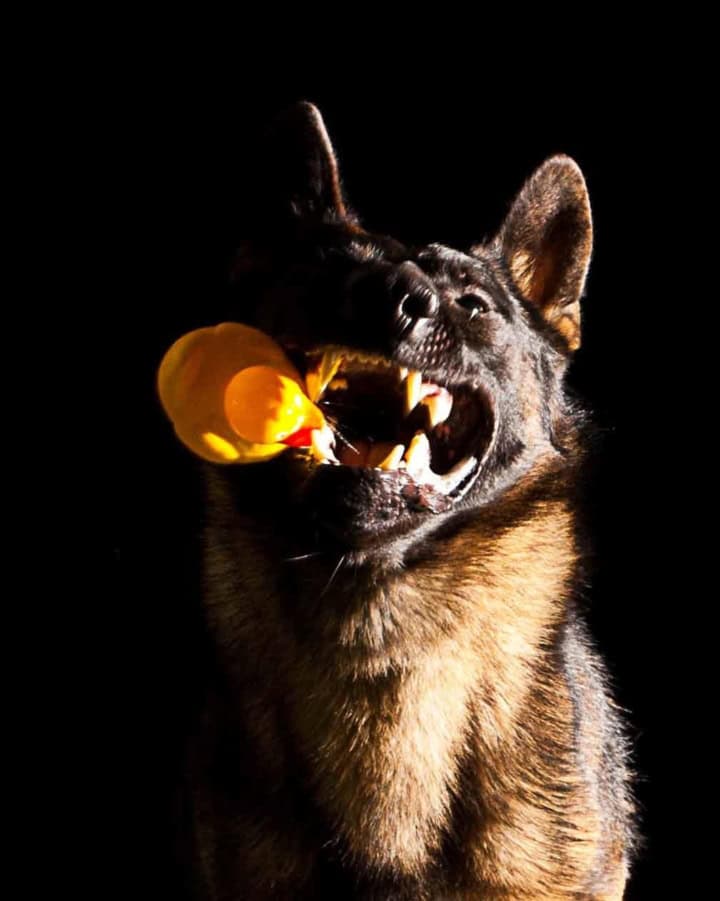I’ve recently been surrounded by really kind people. And these really kind people are also really kind to their dogs. When their dogs are rude, they wait for their dogs to not be rude, then reward them. The people that I have recently been around and myself have two giant differences. 1) I will not tolerate a lack of respect, nor rudeness, from my dogs. The overly kind people will, because the word ‘No’ has somehow become evil.
And 2), – my dogs are not stressed.
Some trainers prefer to wait for the right choice, and then reinforce it. If we are discussing sitting, or lying down, then this is a great strategy. But when it comes to disrespectful and rude behaviour I strongly disagree with this. I would never allow a person to continuously yell at me, then when silent reward them with a beer. Yet many trainers would advise that if you dislike your dog barking at you, wait until he is silent, then feed him. They ignore what they don’t like, then when it is over, reward what they do.
It would be a cold day in hell before we were this nice to people. So why are we being this nice to dogs?
Now here is what I am finding fascinating. They never say ‘no’ to their dogs. Their dogs are never wrong and are only ever rewarded for being right. Yet, the threads on blogs and facebook are all about how to help their dogs handle stress. Stress reduction is a huge part of their training. Their dogs all seem to be fearful, stressed and unable to deal with any moment out of the ordinary.
The “Kindness” being given to their dogs is stressing their dogs out.
I find the stress talk fascinating because I’ve never had a fearful or stressed dog and neither have any of my like-minded training friends. We’ve had dogs from every walk of life- rescues, a variety of breeds all with perfect and imperfect beginnings. We compete with them all which is very stressful, yet our dogs don’t show stress or fear (even if as a puppy or rescue that start that way). Though, I am not being completely honest. Hilda Irish Terrier did go through moments of stress.
Hilda is twelve now. Eleven and a half years ago I decided to use my clicker a whole lot more training my terrier puppy. I shaped more behaviours with Hilda, meaning that rather than showing her what I wanted with my hands, I rewarded her for successive approximations of my end goal. If she was wrong, we just tried again without me telling that she had made an error. I allowed her to flounder in a grey area of “Kind of right, but not really”.
A strange thing started to happen. When I did not click and feed her action, she decided it was wrong. Even though I had never told her that – she decided it was wrong and internally crumpled. She would shut-down, not want to train any more, nor would she want to engage with me. For Hilda – not being told that she had made an error was incredibly stressful because she had to keep guessing what I wanted. I wasn’t laying out any clear parameters for her of my expectations. Instead, I kept making her guess, and only rewarding her when she was right.
I’ve had women like this in my life in the past. Everything is “Fine” and you have to guess what sin you committed, and then try and remedy it without ever being told. This is extremely frustrating and I choose not to engage with this type of person any more. When you are with these people you feel like you are walking on eggshells, never quite sure of the expectations of your behaviour. Apparently Hilda felt the same about me.
Fairly shortly in Hilda’s training, I realized my error and went back to my normal training, which included saying “No Dum Dums, that’s not what I want. Try again”. This helped her bounce back. I also started to show her what I wanted with my hands if needed, rather than making her guess. After all, she really is not very clever, and she needs all the help she can get!
There is nothing wrong with the word “No”. It is informational, making your requirements clear. If it’s not right then please say so. We have a full range of varying emotions when we say the word “No”. “No, that is not the colour orange” will be said and received very differently from “No, don’t point the gun at my head”. In our human relationships we can decipher the severity of the tone. Dogs can too.
If your dog does something that can simply never happen again, then you need to let him know that or you are being dishonest to him. This “No” needs to come out with emotion that indicates that the act was forbidden and is to not be repeated. This communication is no different from any of your human relationships. Be clear about your expectations and boundaries, which is indicated by your tone and emotions in the words that you use.
If your dog bites you, you are being unfair to him if you do not let him know how wrong he was. While you yourself might be able to pull your hand away, and justify it as “Just a Nip”, when your dog does the same to a young child who didn’t know to pull their hand away, the authorities might euthanize him.
You will get your dog killed because you didn’t want to be the bad guy and tell him he was completely out of order. Your “Kindness” will not only make your dog a stress case, but might `also get him killed.
Be clear with your dogs. From our human relationships with unclear communication we fully understand how stressful it is always trying to work out what someone wants from you when you have missed the subtle cue.
With our dogs it is less stressful for them if we show them what we want, and reward them for it, rather than making them guess. Dumb your task down so that they are forced to succeed with your guidance if needed, then reward them for it. Our expectations and rules need to be clear for them to be happy and free in their lives. Not knowing their expectations makes their lives very stressful. If they know what makes you happy, and what makes you unhappy, they have been given the golden tickets for knowing where they stand. Being in a place of unknowing is stressful so don’t put your dog there (or your spouse or children).
Make sure your “No” to “Yes” ratio is appropriately balanced. Your dog should be hearing ”No” a fraction of the times that he is hearing “Yes”. This percentage depends upon age. A young dog or new dog to you should only be hearing no once or twice a day for serious infractions. If you are using more than that – it means they have too much freedom with which to get into trouble, or way too little exercise.
And with Older Dogs you really shouldn’t have to use the word “No” much at all either. If you find you are using it more than two to three times training a concept, it means your concept is too difficult and need to be broken down into smaller teachable pieces.
When expectations are clear it is easy for our dogs to fulfill them. Knowing will remove a whole lot of stress from your dogs because they no longer have to guess if it is the right or wrong thing to do.
Communication of boundaries and expectations will give you a stress free dog. The word “No” is the key to being kind, and will give your dog happiness in knowing his place rather than having to guess about it. If you honour your dog with the kindness of rules and fair communication, you can quickly turn your stressed or fearful dog into a functioning and happy member of society.
Happy Training Everyone,
Monique Anstee

